The edible part of animal tissues manufactured or processed into byproducts for consumption is called meat. Meat classification is based on the type of animals referred to as white meat, fish and shellfish meat classified as seafood and meat from non-domestic animals. However, the most commonly consumed meat includes beef from cattle, veal from calves, lamb from the meat of young sheep, mutton from the meat of more than 2-year-old sheep, and pork from hogs.
1. Muscles Changes
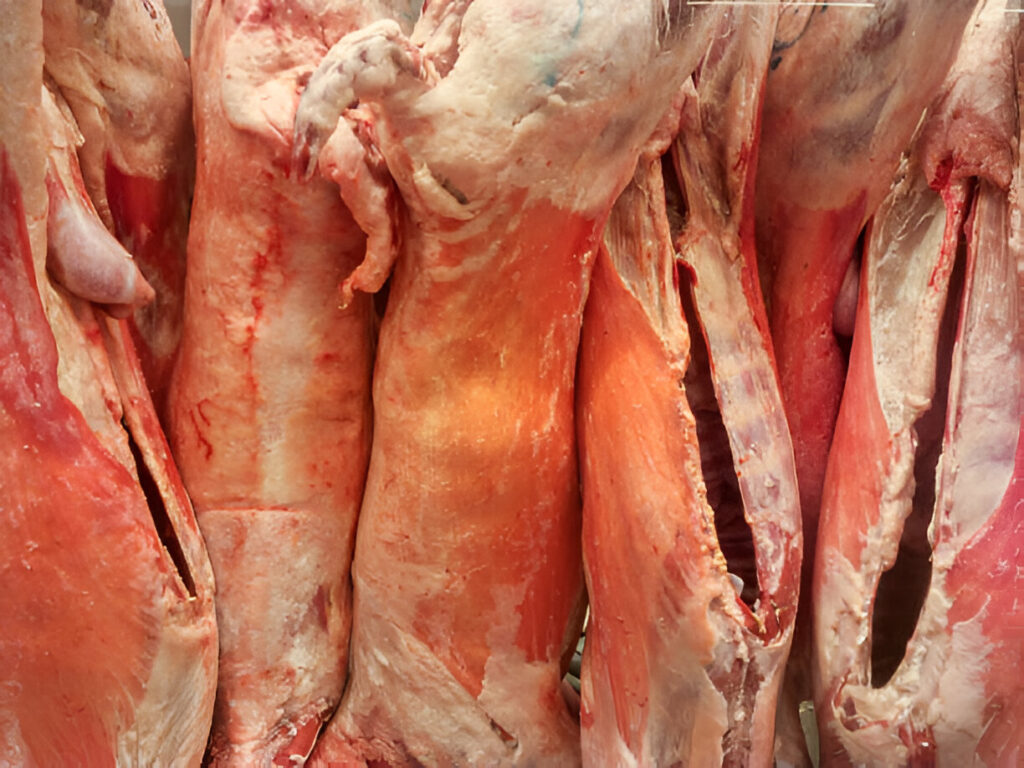
When animals are slaughtered, the life-sustaining processes slowly stop, resulting in significant changes in the postpartum meat muscles, referred to as the conversion of muscles to meat.
1.1 pH
After getting slaughtered, the pH of muscles decrease and becomes more acidic. When animals are bled, there is no oxygen content in muscle cells, and the source of energy production is only anaerobic glycolysis. So, stored glycogen is converted into lactic acid, resulting in a decrease in pH. The ultimate pH of postpartum meat is 5.5, and living muscle is 7.2.
1.2 Protein
When muscles lose energy, myofibrils (actin and myosin) proteins, resulting in the stiffness of muscles and no extensibility. This condition is referred to as rigor mortis. The period for an animal to attain the rigor mortis condition depends on the species. For example, cattle and sheep take longer for rigour mortis than hogs. The time required for rigor mortis condition also depends on the chilling rate of the carcass and the stress that the animal experiences before slaughtering.
Stiffness in the muscles lowers with time because of enzymatic actions ( breakdown of protein that holds the muscles together). This condition is called resolution rigour, which, with time, refers to the aging of meat that increases the tenderness and makes it more palatable.
2. Slaughtering Procedure
The slaughtering procedure involves three steps:
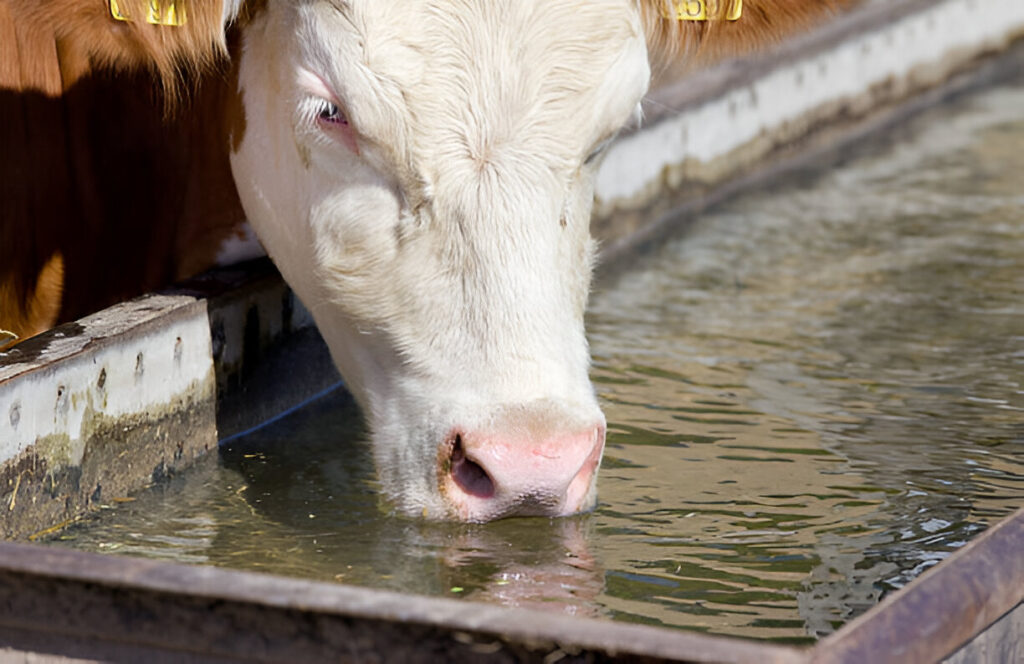
2.1 Pre-slaughter Handling
Pre-slaughter handling is a topic of significant interest to the livestock industry because livestock experiences stress before slaughter, resulting in undesirable meat changes. This way, different animal groups mix various animal groups and keep them under adequate ventilation conditions.
Animals must have complete access to the water before slaughter but delay the feed for 12 to 24 hours for accurate bleeding and evisceration.
2.2 Stunning
Once this process starts, livestock is controlled to limit the physical movement of animals. After restricting the animal, the destiny method ends it with no pain. The stunning method ensures low stress in the animal and a high-quality meet. There are 3 most common methods of stunning

- Electrical stunning
- Mechanical stunning
- Carbon dioxide gas
2.3 Slaughtering
Animals are hung by hand limb after being stunned and moved on a conveyor line for the further procedure of slaughtering. Stabbing the knife in the thoracic cavity followed by the carotid artery and jugular vein for complete bleeding.
Before hanging the animal, the effete feet are removed from the carcass by the carcass by the Achilles tendon. Mechanical skinners, called hide pullers, skin the carcasses. Workers remove the heads at the point of the first cervical vertebrae, called the Atlas joint. After separating the heads, they place the carcass in a chiller for 24 hours for fabrication.
3. By Products
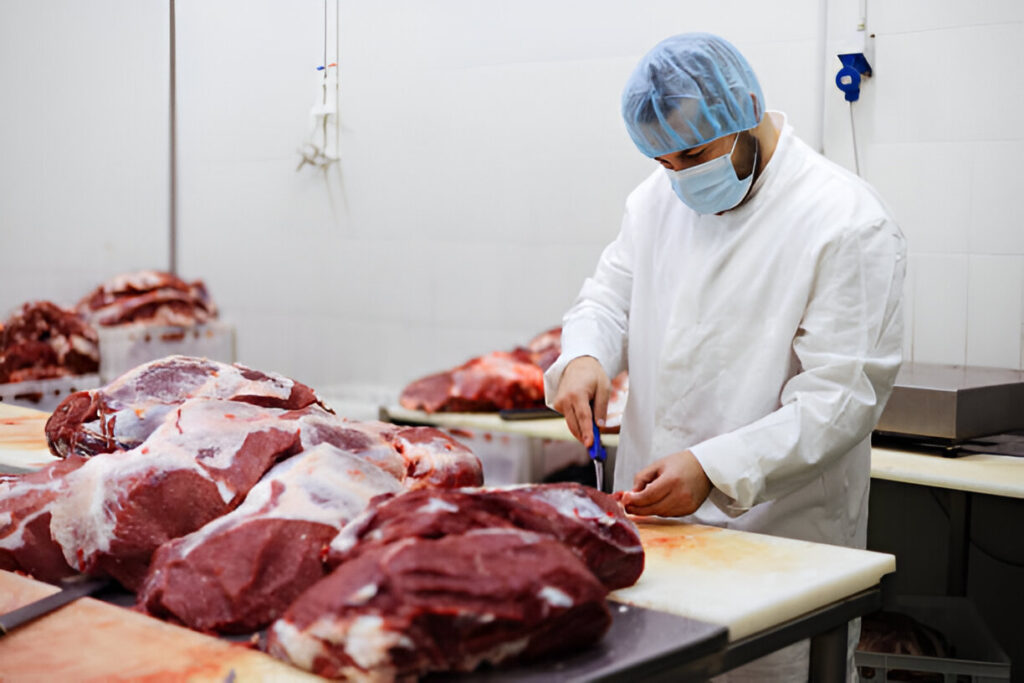
The carcass’s non-meat part is collected during the slaughter process, called offal. Variety cuts include hearts, brain, liver, testicles, kidneys and tongue. Bones are used as bone meal in animal feed or fertilizers. Manufacturers use gelatin obtained from animals to produce gelatinous confectionery, and pharmaceutical companies use intestines to make sausage casings. We can get hormones and pharmaceutical products like insulin cortisone and harpin from the various tissues and glands.
Manufacturers use edible fats as shortenings, cooking oil, lard, and tallow. They use inedible fats to produce candles and soap. The cosmetics industry uses cheap hides and holes, while pelts are used to manufacture leather.
4. Inspection of Meat
Meat inspection aims to ensure safety, wholesomeness, and labelling. The procedure of the meat inspection includes the following steps:
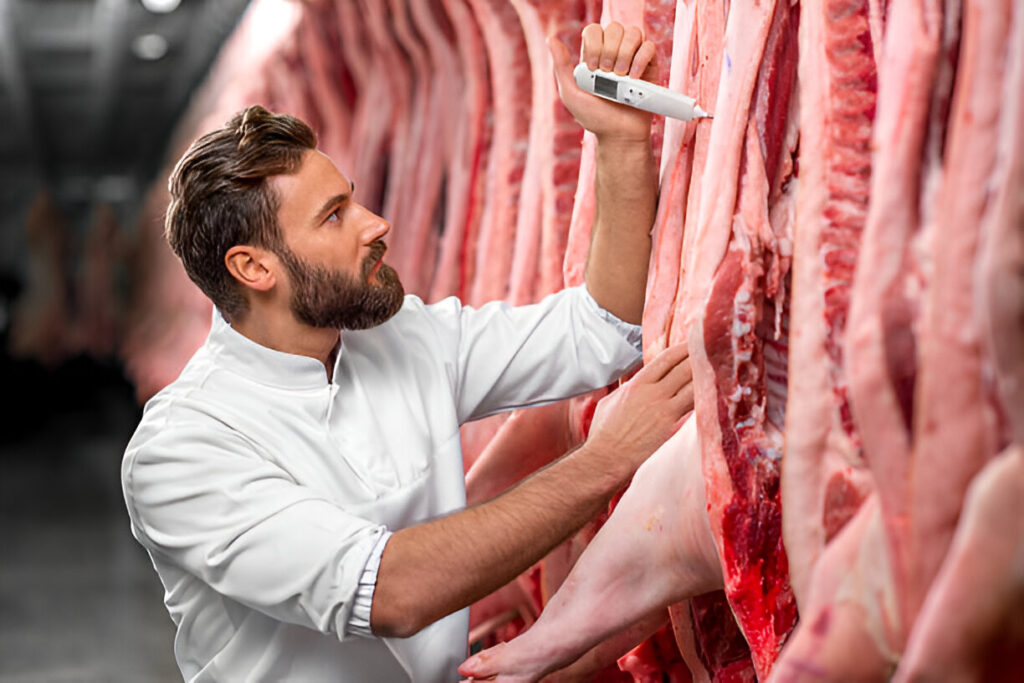
- Anti-mortem and postmortem inspection
- Re-inspection
- Sanitation
- Facilities
- Equipments
- Labelling
- Standards
- Compliance
- Pathology and epidemiology monitoring
- Federal state relations and foreign programs
4.1 Anti-Mortem and Postmortem Inspection
Inspectors perform anti-mortem inspections to identify disabled, diseased, or dead animals that are not fit for consumption. These animals are removed from the food chain and labelled “condemned.” Postmortem inspection involves inspecting the viscera, head, and carcass unsuitable for human consumption.
(i.) Re-Inspection
Inspectors re-inspect the meat during processing to ensure the wholesomeness and safety of the ingredients used to manufacture the processed meat. Sanitation is a significant process to follow throughout the whole process before and after production.
(ii.) Meet Processing Equipment
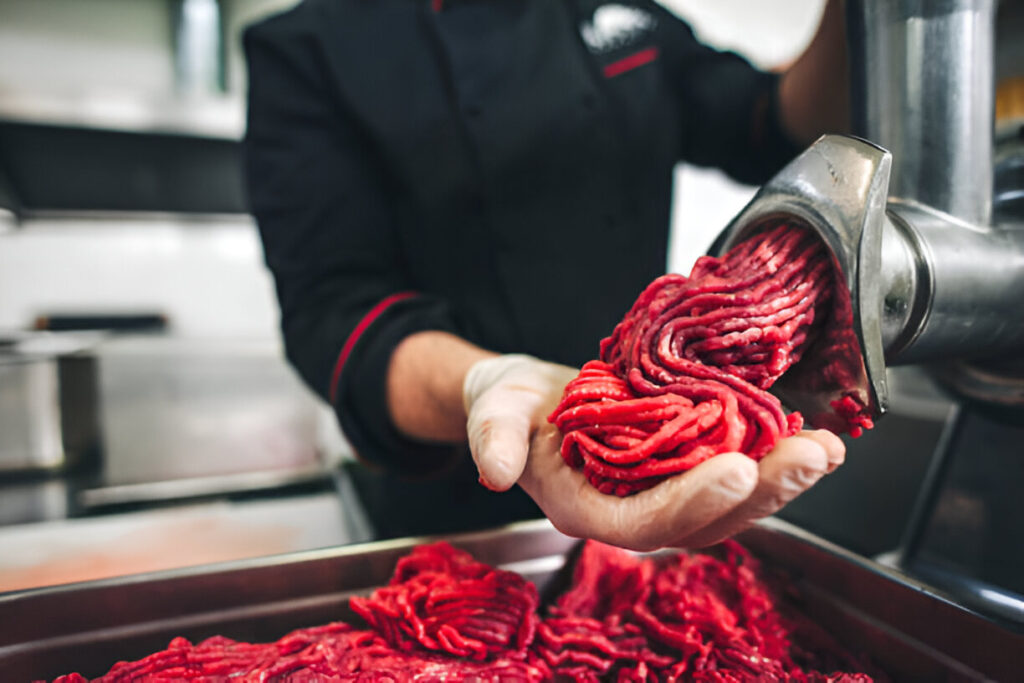
Meet processing equipment includes the following:
- Meat saws and knives
- Meat grinders
- Slicers
- Smoker curing oven
- Petty, meatball and sausage machines
- Chillers and freezers
- Meat mixer
- Floor drainage
4.2 Labelling
Regulatory standards ensure accurate product labeling and that the information on the label meets nutritional requirements.

- Information on the label includes
- Name of the product ingredients list
- Place of origin of packing and manufacturer
- Net weight of the product
- Plant number and inspection stamp
- Instruction of handling
4.3 Compliance
Compliance ensures criminal, civil, and administrative sanctions against violations of inspection law.
4.4 Epidemiology and Pathology
Epidemiology and pathology promote the efforts of meat inspectors by working with the public health agency to reduce the risk of food-borne poisoning outbreaks.
4.5 Residue Evaluation and Monitoring
Residue evaluation and monitoring help identify and separate animals with harmful residues from the food chain. These residues can be toxins, pesticides, or antibiotics.
4.6 Meat Grading
Meeting meat standards varies worldwide because every country has different quality standards. The grading system depends on the confirmation of the carcass’s external fat thickness, texture, colour, firmness of lean meat, shape and colour of bones, marbling level, flank streaking, and Leanness degree.
5. Importance of Meat Processing

The meat processing industry involves converting raw materials into processed and packaged foods that people can purchase. These products of processed meat include sausages, fresh meat cuts, canned meats, and bacon.
There is a significant demand for meat worldwide. However, meat production is not about cutting meat into various cuts and packaging. Instead, it is about keeping meat safe and fresh and making multiple products.
5.1 How can we process meat?
It involves the steps:
- Slaughtering
- Cutting and deboning
- Preservation of meat
- Mixing and grinding
- Packaging
6. Meat cooking
Cooking and heating cause physical changes in the muscles and tissues of meat.
6.1 Colour change
Cooking at 54°C to 82°C alters the colour of the meat from red to purple to pale grey. This is due to the denaturation of the protein in the meat.
6.2 Structural changes
The effect of the heat on my favourite proteins and connective tissues results in the tenderness of the meat. The meat with the fewest connective tissues is the most tender. It must meet the required slow cooking requirements to achieve collagen and gelatinization if it has many connective tissues.
7. Meat Production
Global meat production has increased for the past 50 years, and total meat production has increased four times since 1961. Asia is the largest meat producer, contributing to the percentage of global meat production.
The dominant livestock for meat varieties are cattle, sheep, buffalo meat, beef, goat, and pigs, but the distribution of the meat varies across the world.
7.1 Types of Processed Meat Production
(i.) Intensive Livestock Farming
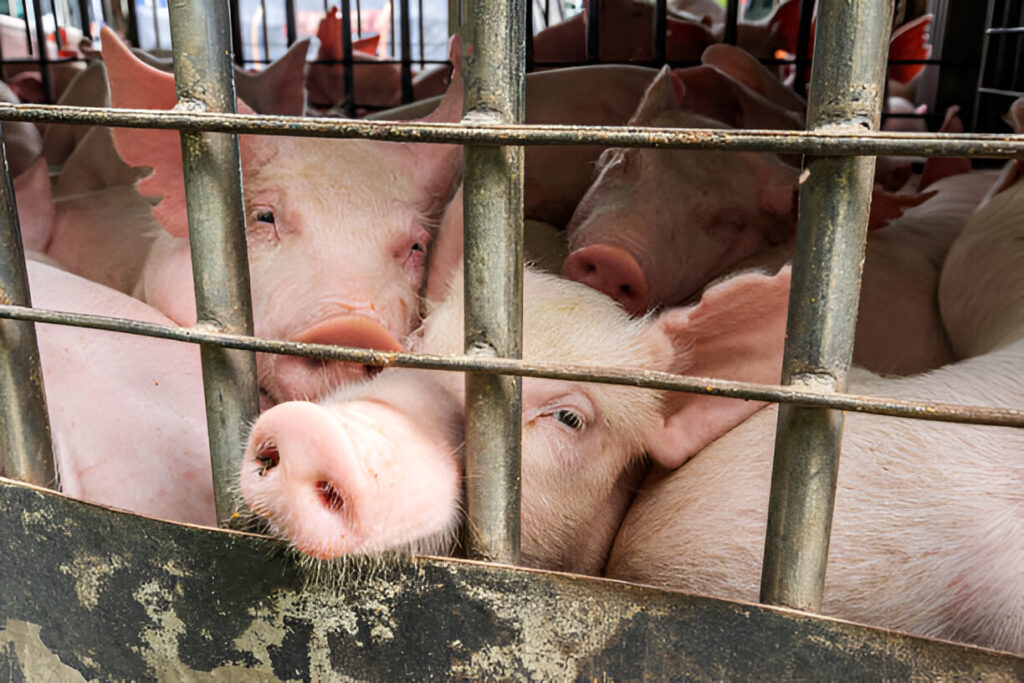
Intensive livestock farming focuses on maximizing output. Farmers raise animals in confined indoor spaces for high-quality production. They control the environment to ensure the animals’ health, growth, and rapid milk production.
This type of farming has several benefits, including high meat production and cost-effectiveness. However, it also has challenges, including health issues and crowded conditions.
Farmers control animal feed, water, and space temperature according to the animals’ requirements.
(ii.) Extensive Livestock Farming
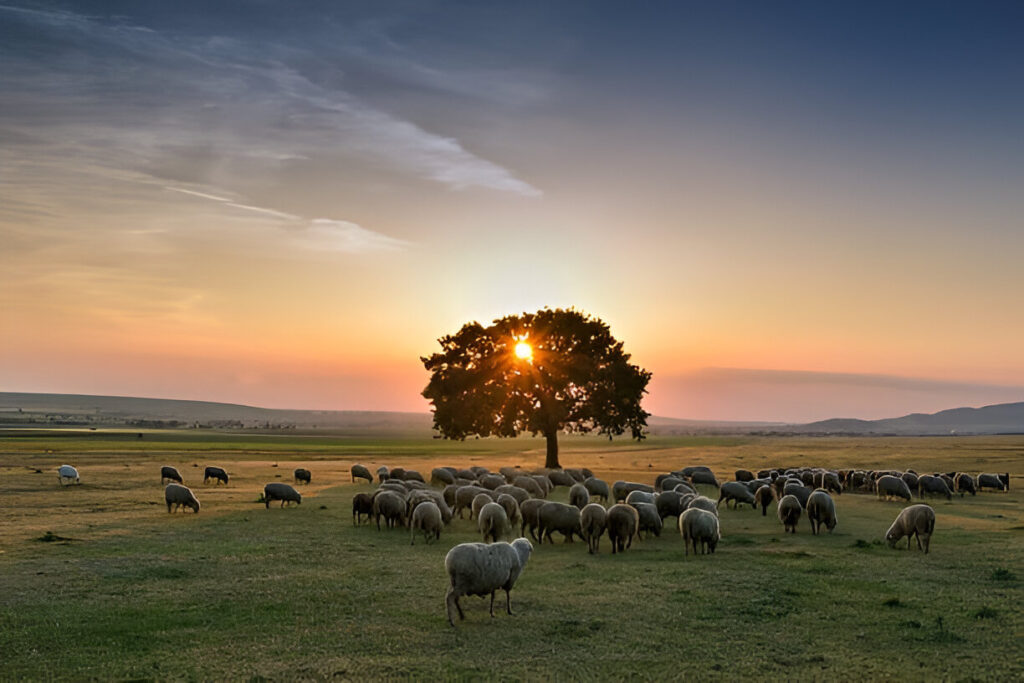
This type of farming is traditional and natural, as there is vast space to go outside and graze in a healthier and more relaxed climate.
It focuses on the quality of meat rather than quantity. However, this farming technique requires a lot of labour and more land space. Farmers use the rotational grazing technique to sustain soil fertility and maintain the animals’ nutritional health.
(iii.) Free-Range Meat Production
We also call this a concentrated animal feeding operation (CAFO). This arming technique allows the animal to graze in fresh environments. It promotes animal welfare, natural approaches, and high-quality meat. However, this technique also faces challenges like predation risk and diseases.
(iv.) Organic Meat Production
Organic processed meat production focuses on sustainability and a natural approach to healthier growth by rejecting synthetic chemicals. The organic profile of the meat requires strict certification guidelines that involve organic feed to prevent antibiotics and growth hormones and animal access to the outdoors.
Consumers prefer meat that is free from synthetic chemicals and has high nutritional value. Organic production produces healthy soil and promotes biodiversity, but this method requires high labour and costs. The meat produced by organic production will be costly for consumers.
(v.) Grass-fed Meat Production
The animals grown with the grass-fed meat production technique graze only grass and do not consume grain feed. Grass-fed meat has health benefits and contains omega-3, three fatty acids, and high antioxidants. However, it is also different in flavour.
However, this technique will take longer, as animals take longer, promoting a desired market weight and inability. Asmoremal takes a long time to attain the market-desired weight so that it will cost more.
7.2 Preservation/ Storage
Meat preservation controls the microorganism, slows the enzymatic activity, and prevents the fatty acid oxidation that causes rancidity. Preservation techniques include freezing, cold storage, vacuum packaging, drying, canning, fermentation, curing, and smoking irradiation.
8. Conclusion
Farmers use specific techniques to produce processed meat that meets customer demands. They slaughter the animals in compliance with regulatory standards and process the meat for distribution. The prepared meat is then preserved and stored to ensure safe consumption. Click here to learn more.

